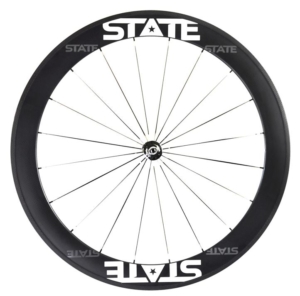Be prepared for the inevitable, learn how to change your tubular
Changing a tubular. Get ready for fun. Seriously! Many factors can lead to the need to change your tubular. Regardless of what happens, the fact remains, you still need to learn how. Make sure you have the materials below before beginning this process. Follow the directions and you’ll be cycling again in no time.
Materials needed:
- tubular tire (and wheel)
- clear glue, Hutchinson Tubular
- pump
- patience
- valve extender
- Teflon tape (used in plumbing)
Directions:
Before you begin to change your tubular, be sure to stretch out the new tire before trying to mount it on the wheel. You can do this by stepping on the inside of the tire and pulling the rest of the tire up towards you. You’ll hear it stretch. Using the Teflon tape, wrap the top of the Presta valve (after unscrewing the top of the valve) with Teflon tape. Now screw the valve extender onto the valve stem, making sure to leave the valve open. Take the glue and leave a bead of glue around the rim about 1/4 inch thick. Insert the valve through the valve stem hole. As you pull the tire down over the wheel be sure to stretch it and the tire should slip on the wheel. Inflate the tire to about 50 or 60 lbs. so the tire takes it shape. Let the wheel dry for 24 to 48 hours before riding. BE SURE TO INFLATE TIRE TO MAXIMUM PSI, for most conditions 140 is sufficient. Failure to inflate tires before riding could result in a race day crash. No one wants that.

